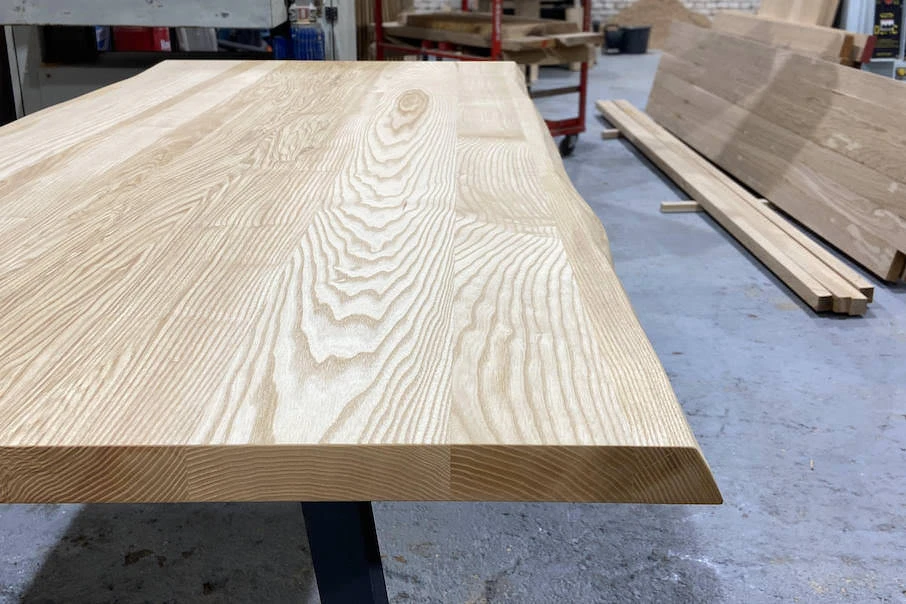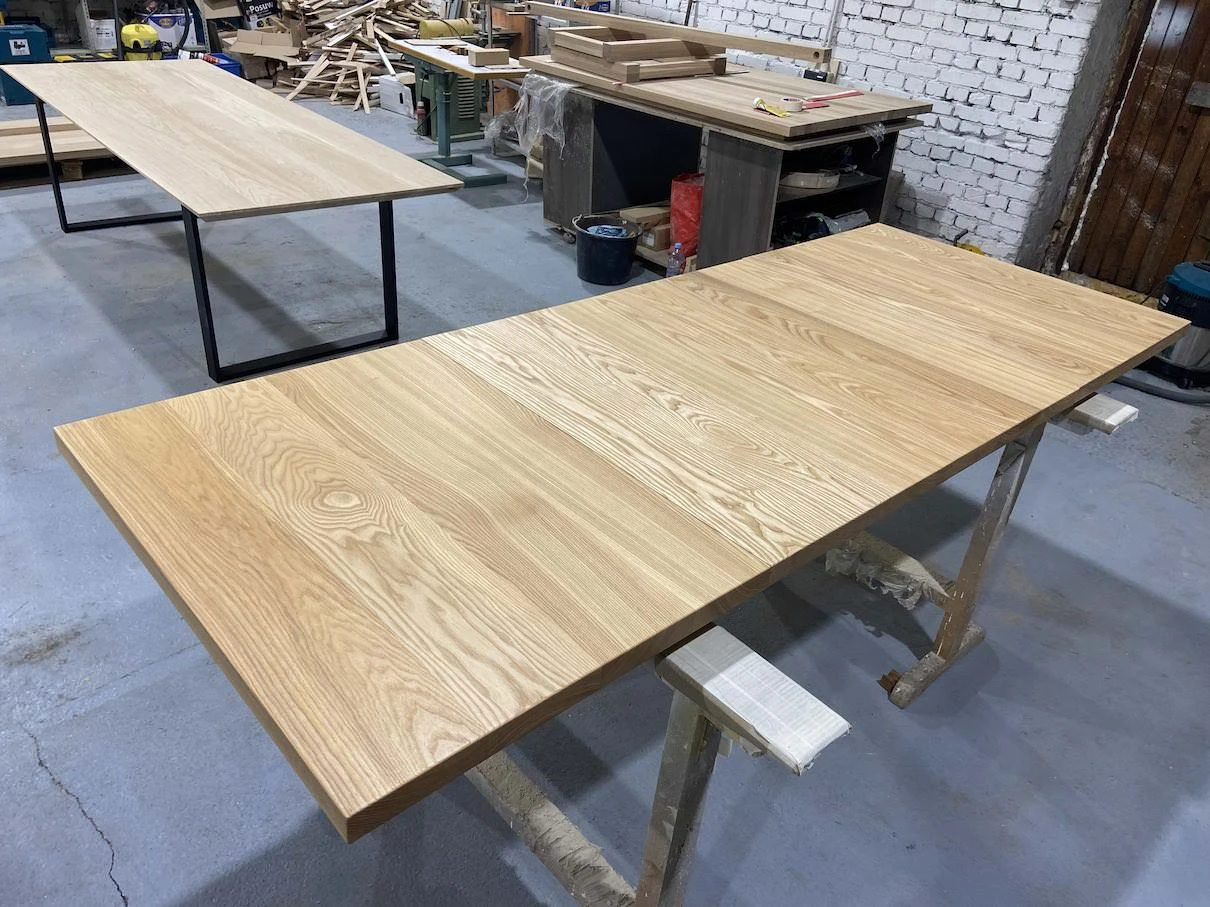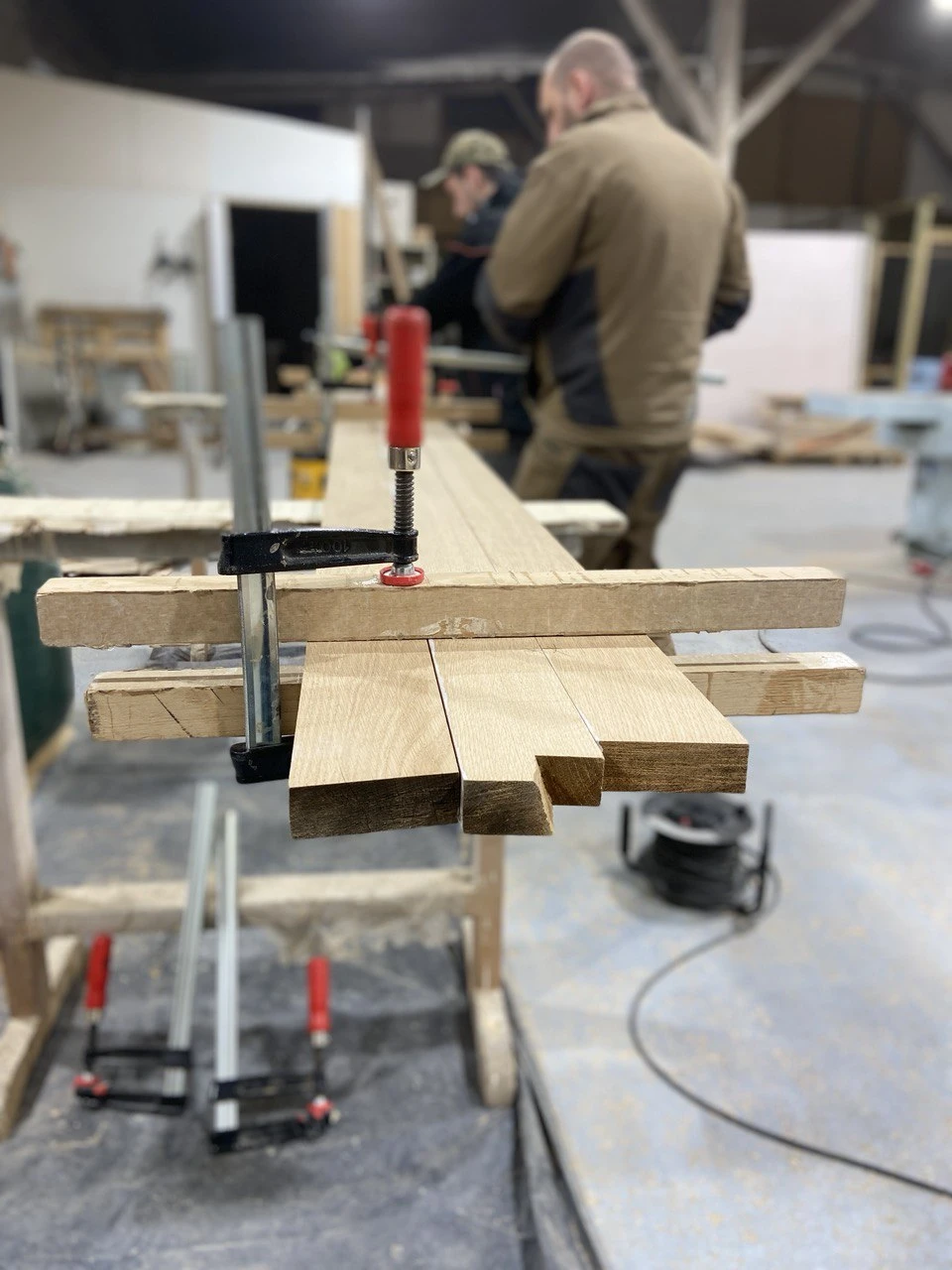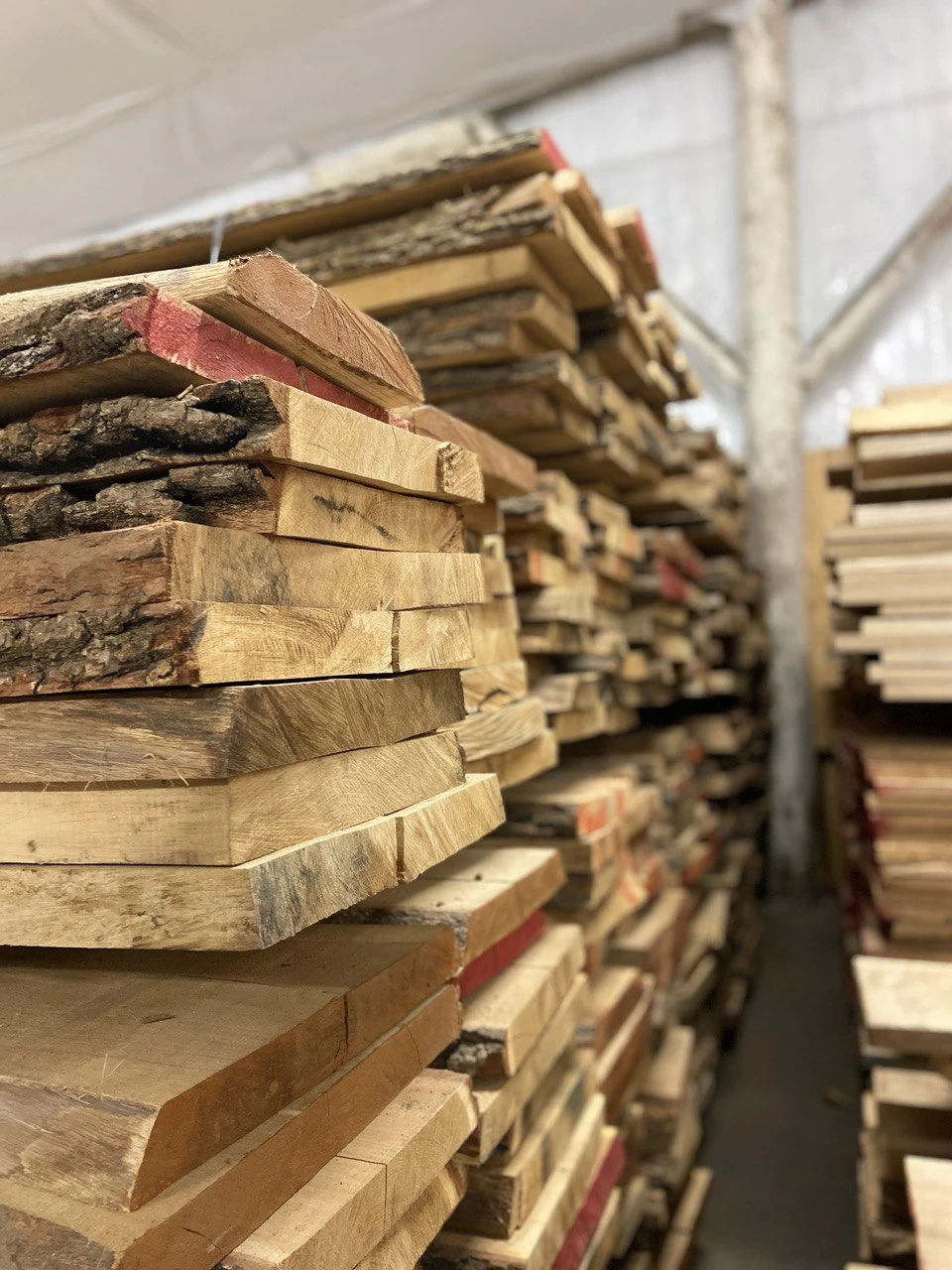Ashwood is a popular hardwood used in various woodworking and furniture-making applications. It is known for its distinctive features and properties, making it a sought-after choice for many woodworkers. Here are some of the critical features of ashwood lumber:
- Colour: Ash wood typically has a pale to light brown color with a creamy, almost white sapwood. The sapwood is sometimes distinctly different in colour, which can lead to a uniform appearance. The color of the heartwood ash wood is highly dependent on the region and the ground. Among our ash, it is 50/50 - half is uniform, like other parts, and the rest has a motley color.

- Unique Patterns: Ash wood has a straight, pronounced grain pattern that is often described as open and coarse. Occasionally, ash wood can exhibit visually striking features, including bird's eye patterns, curly grain, and cathedral grain patterns. These unique patterns can enhance the aesthetic appeal of projects.
- Durability: Ash wood is relatively durable, especially in terms of its resistance to decay and rot. It is commonly used for sports equipment, such as baseball bats and hockey sticks.
- Hardness: Ash wood is known for its exceptional hardness and strength. It ranks highly on the Janka hardness scale, making it a durable and long-lasting choice for many applications. This hardness makes it resistant to wear and tear.
- Workability: Ash wood is easy to work with and is known for its excellent machining properties. It can be cut, shaped, and sanded relatively easily, making it a favourite among woodworkers and furniture makers. It also holds screws and other fasteners well.
- Finishing: Ash wood finishes nicely, taking stains and finishes evenly, which allows for a smooth and attractive final appearance. It's a light color, and the uniform grain pattern makes it a versatile wood for various finishing options.

It's important to note that there are several species of ash, including white ash and European ash, with variations in colour and properties. The choice of ash wood species depends on the specific requirements of your project and your regional availability.
Difference between ash and oak lumber
Oak lumber and ash lumber are both popular choices for woodworking and furniture making, but they have distinct differences in appearance, hardness, workability, and other characteristics. Here are some of the key differences between oak and ash lumber:
Wood Grain and Appearance:
Oak wood has a prominent grain pattern with rays and dots, which can give it a distinctive and attractive appearance.
Ashwood typically has a straight and open grain pattern, with a pale to light brown color and creamy sapwood. The grain of ash is generally less pronounced than oak, giving it a more uniform and less busy appearance.
Woodworking feartures:
Oak can be more challenging to work with it due to its density and interlocking grain. It may require sharp tools and proper techniques to prevent tearout and splintering.

Ash wood is easier to work with compared to oak. Its straight grain and open texture make it more forgiving in terms of machining, cutting, and finishing.

Color:
The colour of oak varies depending on the species (red or white oak) but typically ranges from light to medium brown with distinctive reddish or pinkish undertones (for red oak).
Ash wood is generally a lighter, pale to light brown color with a creamy sapwood. It tends to have a more neutral appearance without the brown tones found in oak. Some ash has a unique olive tone that gives a noble view.
Application:
Oak is often chosen for its rich, traditional appearance and is commonly used in furniture, cabinetry, flooring, and architectural applications.
Ash's lighter and more uniform appearance, along with its workability and strength, makes it a preferred choice for modern and contemporary furniture, as well as sports equipment and tool handles.
Сonclusion
Ultimately, choosing oak and ash lumber will depend on your specific project requirements, design preferences, and regional availability. Both kinds of wood have their unique qualities and can be excellent choices for different applications in woodworking.

